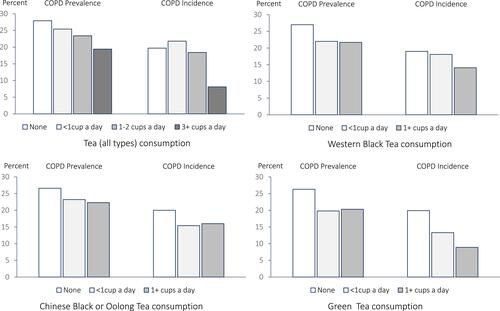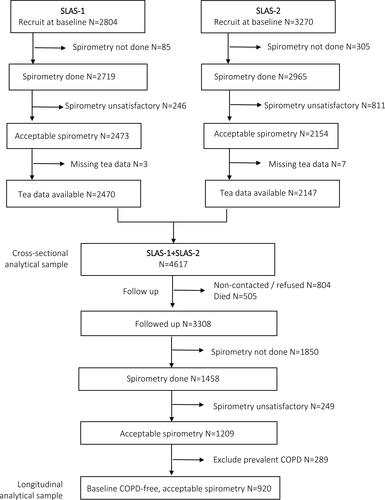Figures & data
Table 1 Baseline Tea Intake and Related Characteristics of SLAS-1 and SLAS-2 Study Participants by the Presence and Absence of COPD (N=4617)
Table 2 Cross-Sectional Analysis of Baseline Association of Tea Intake with Prevalent COPD
Table 3 Baseline Characteristics of COPD-Free SLAS Participants (N=920) by Tea (All Types) Intake Categories
Table 4 Longitudinal Analysis of Association of Baseline Tea Intake with Incident COPD Among COPD-Free SLAS-2 Participants
Figure 2 Baseline prevalence and 5-year cumulative incidence of COPD by consumption levels for all and different types of tea. Legends. Western black tea refers to tea consumed with milk and sugar. Chinese tea includes both black, oolong and green tea. Consumption levels are in 3 categories (third category: ≥1 cup/day) for specific tea types, and in 4 fours categories for all tea types (third category further divided into 1–2 cups/day and ≥3 cups/day).


